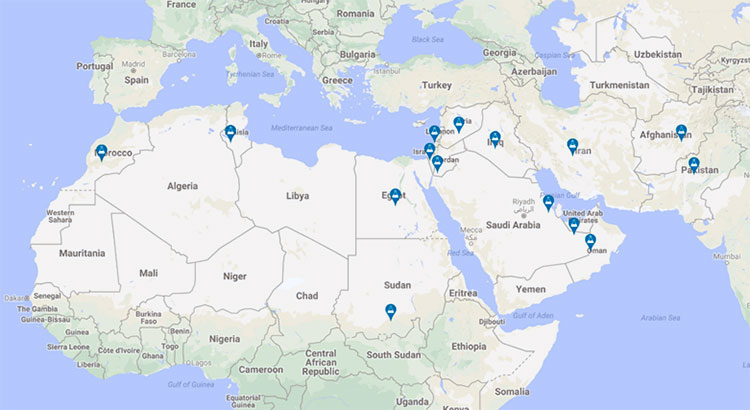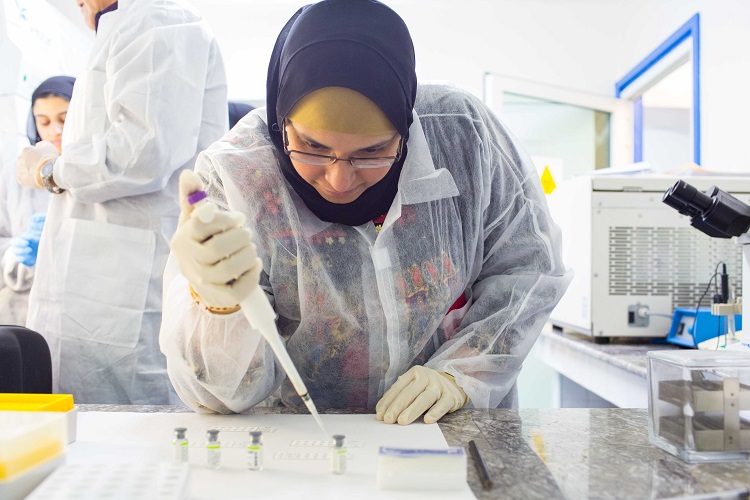|
EWARN |
 |
 |
|
 WHO early warning experts assess Syria’s early warning disease surveillance system (Photo: WHO, 2017) WHO early warning experts assess Syria’s early warning disease surveillance system (Photo: WHO, 2017)
Early warning systems for disease outbreaks are surveillance systems that collect information on a selected list of epidemic-prone diseases in order to trigger prompt public health interventions. They function in humanitarian emergency situations when the routine public health surveillance systems of a country are underperforming, disrupted or non-existent. Early warning systems are often set up to fill such temporary gaps, while the routine systems recover from the effects of the disaster or a crisis. During humanitarian emergencies, detecting and responding swiftly to epidemics is key in order to reduce unecessary illness and death, especially among refugees and displaced people.
An Early Warning, Alert and Response Network (EWARN) is a network of health partners that collect and report surveillance data on selected epidemic-prone diseases, as part of establishing an early warning system for disease outbreaks in humanitarian situations. It is usually a so-called ‘syndromic surveillance system’ whereby any unusual event or disease occurrence is monitored and rapidly investigated.
In such surveillance systems, each disease is diagnosed on the basis of case definition. For each of the epidemic diseases, a threshold value for ‘alert” of an outbreak is set. Whenever the threshold is passed, the system flags the event for rapid investigation.
To ensure timely detection and verification of outbreaks, as well as effective monitoring of disease patterns, an EWARN has two main components. An immediate alert component signals the early stages of an outbreak, which requires an immediate investigation for verification, while a weekly reporting component aggregates data from health facilities to provide information on disease trend, for prioritiy health conditions.
WHO, health partners and Ministries of Health implement EWARN together in countries that face humanitarian crises. Currently, seven countries in the Region which are facing protracted emergencies have established a functioning EWARN system: Afghanistan, Iraq, Libya, Somalia, Sudan, Syria and Yemen.
When security constraints limit mobility, members of an EWARN can often not share data manually and EWARN coverage decreases as a result. However, recent experiences with real-time innovative electronic solutions prove that these systems can be maintained even in difficult situations, facilitatling its key functions of early detection and effective monitoring of disease trends.
|
|
Annexes |
 |
 |
|
|
Emerging and dangerous pathogens laboratory network |
 |
 |
|
 Regional laboratory experts in Amman, Jordan learn how to diagnose Zika virus (Photo: WHO, 2017) Regional laboratory experts in Amman, Jordan learn how to diagnose Zika virus (Photo: WHO, 2017)
The Regional Emerging and Dangerous Pathogens Laboratory Network (EDPLN) was established in August 2017, to enhance capacities of laboratories in the Region to detect and diagnose outbreaks of emerging and dangerous pathogens (EDPs). The list of dangerous and high threat pathogens that the EDPLN covers include new and emerging ones, as well as existing pathogens causing repeated outbreaks in the Region such as avian influenza, cholera, dengue, and yellow fever.
The network includes both private and public, human and animal diagnostic health laboratories. To provide advanced diagnostic services, these laboratories are selected for their biosafety levels, and capacity for accurate detection and diagnosis.
The EDPLN has five major objectives:
Improve rapid diagnosis, identification and characterization of viral, bacterial and parasitical EDP outbreaks;
Improve response times to outbreaks;
Further the regional research and development agenda including on diagnostics, vaccine and therapeutics;
Improve biosafety and biosecurity practices;
Facilitate knowledge transfer and information sharing.
 Location of laboratories of the EDPLN Location of laboratories of the EDPLN
|
|
Pandemic Influenza Preparedness (PIP) Framework |
Pandemic Influenza Preparedness (PIP) Framework
 A health worker being trained on influenza preparedness in a laboratory setting in Rabat, Morocco (Photo: WHO). A health worker being trained on influenza preparedness in a laboratory setting in Rabat, Morocco (Photo: WHO).
Pandemic influenza is a rare and unpredictable event. It occurs when a new influenza virus – to which people have no pre-existing immunity – appears and infects a large proportion of the world population, with sometimes devastating consequences. The most notorious known pandemic, the Spanish Flu, caused an estimated 20–50 million deaths worldwide between 1918 and 1919. COVID-19 pandemic caused by a novel respiratory pathogen is embodiment of the pandemic threat posed by respiratory viruses.
To prepare for future pandemics potentially caused by influenza and other respiratory pathogens, WHO is supporting governments in the Eastern Mediterranean region with a whole-of-government and whole-of-society approach, at community, national and international levels. This includes ensuring strong capacity of early warning systems and epidemiological surveillance, laboratories, health systems and health professionals, the emergency response system, and risk communications.
In 2011 the World Health Assembly through resolution WHA64.5 adopted the Pandemic Influenza Preparedness (PIP) Framework, with the objective to improve preparedness and response for the next influenza pandemic. As a unique public-private partnership, the framework has three major components: virus sharing, benefit sharing and governance. The PIP Framework aims to make the international response to pandemic influenza nimble, flexible, effective and equitable. As such, 70% of partnership contribution funds from the PIP framework are allocated to enhance preparedness amongst the low- and middle-income countries. In 2021, among the beneficiary countries of the PIP Partnership Contribution, there are ten countries from the Region: Afghanistan, Egypt, Iraq, Jordan, Lebanon, Morocco, Sudan, Syrian Arab Republic, Yemen and Somalia. These countries were selected based on their geographic distribution in influenza transmission zones, country development status and country needs for enhancing influenza epidemiological and laboratory surveillance capacity.
As of August 2021, 19 out of 22 countries and territories in the Region have a functioning influenza-like illness (ILI) and severe acute respiratory infections (SARI) surveillance system, while 18 designated national influenza centres and four National Influenza Laboratories are operational with the ability to detect and confirm unusual influenza viruses with human pandemic potential. Furthermore, countries are sharing influenza viruses as well as weekly and monthly influenza updates to keep partners and the public informed of important epidemiological data, developments, and events.
|
|